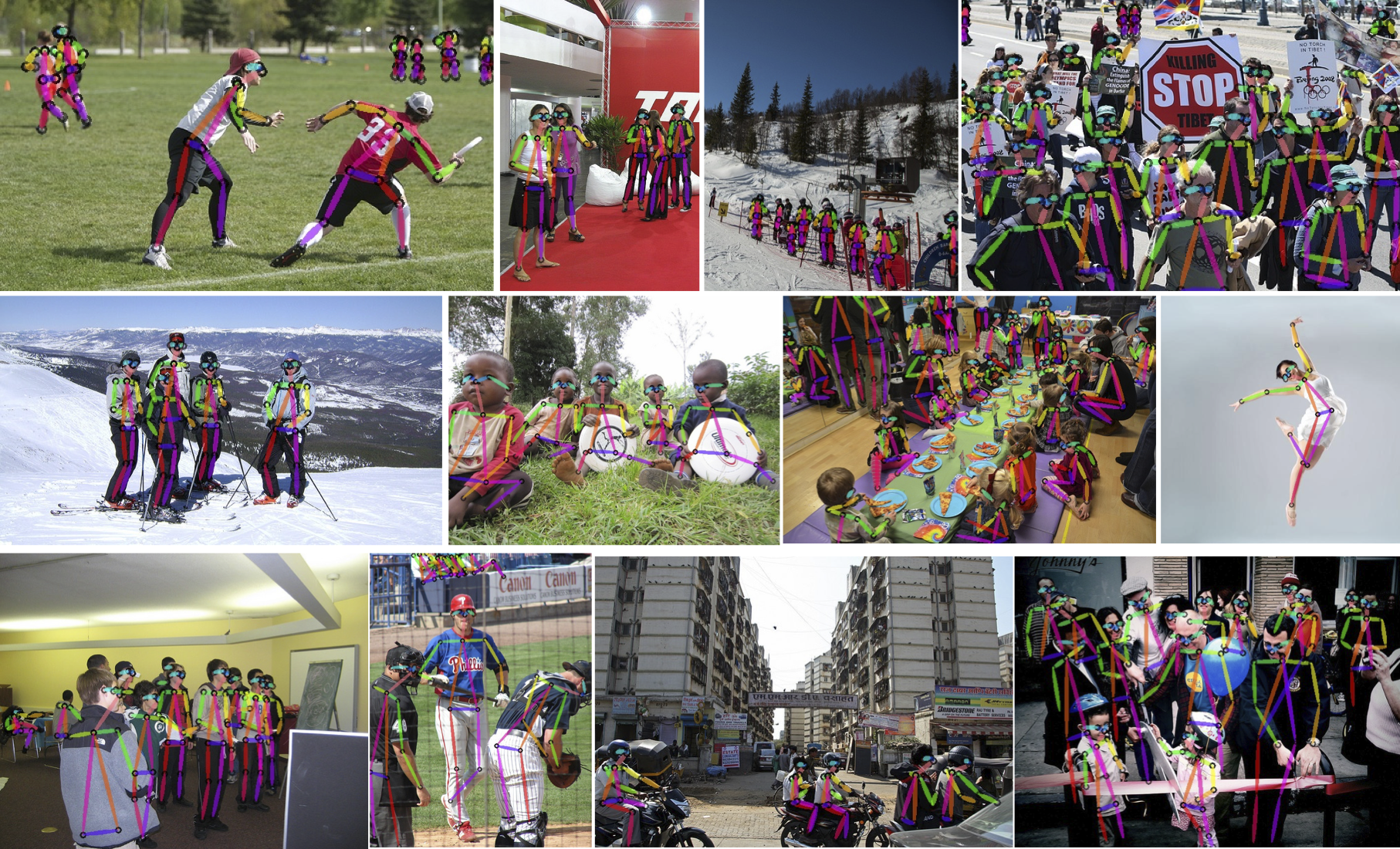Code and pre-trained models for our paper, “Simple Pose: Rethinking and Improving a Bottom-up Approach for Multi-Person Pose Estimation”, accepted by AAAI-2020.
Also this repo serves as the Part B of our paper "Multi-Person Pose Estimation using Body Parts" (under review). The Part A is available at this link.
A bottom-up approach for the problem of multi-person pose estimation.
- Training
- Evaluation
- Demo
- Implement the models using Pytorch in auto mixed-precision (using Nvidia Apex).
- Supprot training on multiple GPUs (over 90% GPU usage rate on each GPU card).
- Fast data preparing and augmentation during training (generating about 40 samples per second on signle CPU process and much more if warpped by DataLoader Class).
- Focal L2 loss.
- Multi-scale supervision.
- This project can also serve as a detailed practice to the green hand in Pytorch.
-
Install packages:
Python=3.6, Pytorch>1.0, Nvidia Apex and other packages needed.
-
Download the COCO dataset.
-
Download the pre-trained models (default configuration: download the pretrained model snapshotted at epoch 52 provided as follow).
Download Link: BaiduCloud
Alternatively, download the pre-trained model without optimizer checkpoint only for the default configuration via: GoogleDrive
-
Change the paths in the code according to your environment.
python demo_image.py
The speed of our system is tested on the MS-COCO test-dev dataset.
- Inference speed of our 4-stage IMHN with 512 × 512 input on one 2080TI GPU: 38.5 FPS (100% GPU-Util).
- Processing speed of the keypoint assignment algorithm part that is implemented in pure Python and a single process on Intel Xeon E5-2620 CPU: 5.2 FPS (has not been well accelerated).
The corresponding code is in pure python without multiprocess for now.
python evaluate.py
Before training, prepare the training data using ''SimplePose/data/coco_masks_hdf5.py''.
Multiple GUPs are recommended to use to speed up the training process, but we support different training options.
-
Most code has been provided already, you can train the model with.
- 'train.py': single training process on one GPU only.
- 'train_parallel.py': signle training process on multiple GPUs using Dataparallel.
- 'train_distributed.py' (recommended): multiple training processes on multiple GPUs using Distributed Training:
python -m torch.distributed.launch --nproc_per_node=4 train_distributed.pyNote: The loss_model_parrel.py is for train.py and train_parallel.py, while the loss_model.py is for train_distributed.py and train_distributed_SWA.py. They are different in dividing the batch size. Please refer to the code about the different choices.
For distributed training, the real batch_size = batch_size_in_config* × GPU_Num (world_size actually). For others, the real batch_size = batch_size_in_config*. The differences come form the different mechanisms of data parallel training and distrubited training.
- Realtime Multi-Person Pose Estimation verson 1
- Realtime Multi-Person Pose Estimation verson 2
- Realtime Multi-Person Pose Estimation version 3
- Associative Embedding
- NVIDIA/apex
Please kindly cite this paper in your publications if it helps your research.
@inproceedings{li2019simple,
title={Simple Pose: Rethinking and Improving a Bottom-up Approach for Multi-Person Pose Estimation},
author={Jia Li and Wen Su and Zengfu Wang},
booktitle = {arXiv preprint arXiv:1911.10529},
year={2019}
}


